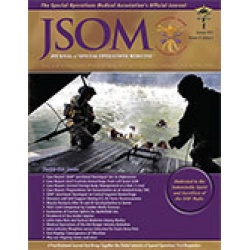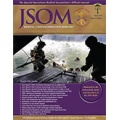Safety and Effectiveness Evidence of SAM® Junctional Tourniquet to Control Inguinal Hemorrhage in a Perfused Cadaver Model
Johnson JE, Sims K, Hamilton DJ, Kragh JF 14(2). 21 - 25 (Journal Article)
Background: Hemorrhage from the trunk-appendage junctions is a common, preventable cause of death on the battlefield. The recently U.S. Food and Drug Administration (FDA)-cleared SAM® Junctional Tourniquet (SJT) was designed to control out-of-hospital inguinal and axillary hemorrhage. The purpose of the present study was to provide safety and effectiveness data associated with use of the SJT. Such data provided support for regulatory clearance. Methods: The SJT was tested in a perfused cadaver experiment simulating inguinal or axillary wound hemorrhage. Results: No safety problems or tissue damage occurred, and flow normalized promptly after tourniquet removal. During SJT use, an average of 107mmHg occluded the distal external iliac artery in an average of 7 seconds of inflation time; manual pressure as a control averaged 139mmHg. In SJT use, an average of 739mmHg occluded the axillary artery in an average of 5 seconds of inflation time; manual pressure as a control averaged 1237mmHg. The control was a referent that achieved results that were similar in one body area but different in the other; both findings indicate the device is as safe as, if not safer than, manual compression. Conclusion: The SJT was shown to be safe and effective in hemorrhage control in a cadaver model for both the axillary and inguinal areas. The SJT's Target Compression Devices required pressures approximately equal to or lower than manual pressure to achieve hemostasis in these junctional regions.


 Español
Español 




